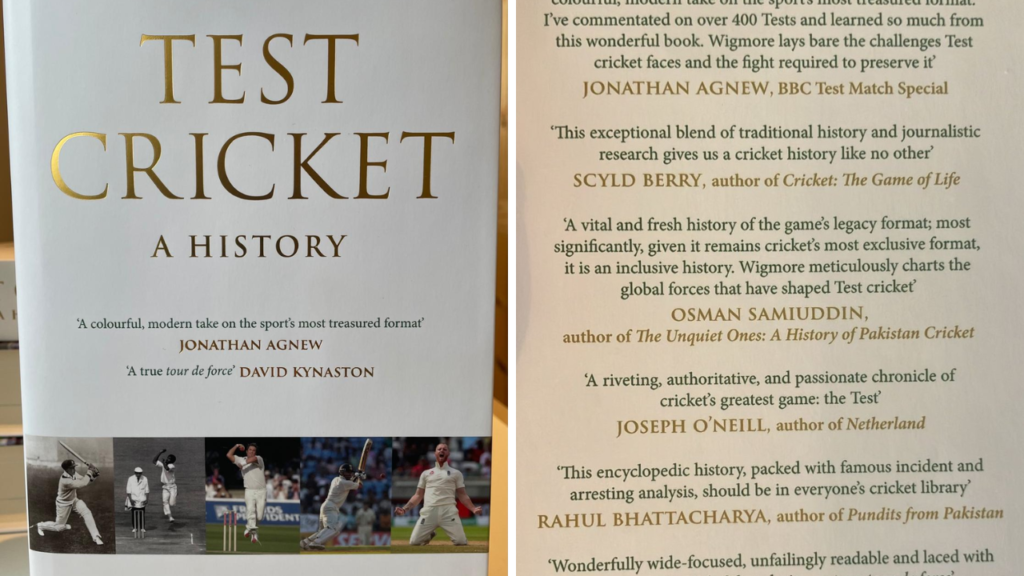
Test Cricket: A history, Tim Wigmore, Quercus, April 2025
It is never easy to write a book with a huge scope. And when it involves documenting multiple narratives and understanding complex socio-political contexts, the task becomes even more difficult. Maybe that’s why there is no perfect history of cricket. Or rather, can’t be. Tim Wigmore’s Test Cricket: A history isn’t perfect. but it comes close to being the go-to book if you are looking at one comprehensive narrative of how the format evolved and transformed itself over time.
Wigmore is an accomplished cricket writer and has spoken to more than 40 international cricketers in the course of writing the book. But what is more commendable is his ability to grasp nuances and understand particular contexts. The chapter on Sachin Tendulkar and his impact, for example, was a personal highpoint. Yes, I’d have liked to see more on India and the power dynamics of the sport, but that’s always the case if you know a particular story well.
Wigmore is objective and passionate at the same time, qualities that very rarely co-exist in a writer. Maybe that’s why he is able to say, “From its very inception, Test cricket has faced challenges. Even in the 1890s people were apprehensive of its future. It was always as if the next crisis is round the corner. With the advent of the 50 over game, this was more pronounced. And yet Test cricket found ways to survive. And innovate. Yes there are challenges no doubt, but I am optimistic about the future.”
I, for one, share his optimism. And agree with him when he says the existing format of the WTC needs some tweaking. While the championship is excellent for Test cricket and has given it context, some tweaks to ensure it is a level playing field are needed.
Wigmore is as good while talking about Bazball. In the interview that we did on what was a rather bleak, chilly and gloomy Oxford afternoon – typical English summer for many – he had this to say, “England was a more boring Test side before Bazball. While I am not saying they are the best side in the world and are comparable to Australia, say between 1999-2003, statistics show that England has won two Tests for every three since the advent of Bazball. Can it be applied in the same way across conditions? The answer is no, and England learnt that in India the last time round. But overall, it has indeed made English Test cricket more attractive.”
In an age of T20 franchise leagues, journalists and writers are mostly about the next copy. Write it out and move to the next one. Much like the shorter format of the game itself. That’s how fast-paced it is and there is very little time for in-depth research, more so when one has a day job as cricket writer of The Telegraph.
Make no mistake, Wigmore deserves huge credit for putting five long years into writing Test Cricket: A history, a book that deserves a place in every cricket aficionado’s bookshelf. It is his labour of love, and I for one learnt a lot from it, enjoyed reading it and interacting with Tim. Only wish the Oxford weather was better, and gave us both a better feel of the summer. But then, we have the Test series coming up, and Tim and I will talk a lot more about the book in the coming days. For now, I have no hesitation in recommending it to anyone interested in knowing the history of Test cricket.
Also Read: Rohit the selfless teamman for every occasion comes to the fore



